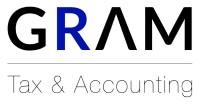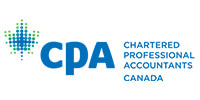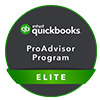Answering the Question – Should I put my Vehicle under my business name?
This is a question that gets asked very frequently, and the answer sometimes isn’t as clear cut as one would think. Most people think that they can put their vehicle in their business name, and because it’s under the business name it’s a complete write off – which is not always the case. Something that is important to understand is that, you must track all of your business usage kilometers – the CRA expects you to keep a log of your trips made for business purposes including which client this was for the number of kms, purpose of the trip, and date. The amount of km you drive for business purposes in relation to your total km driven plays a big part, and we’ll discuss why further below: We’ll talk about a few things here including: 1. Finance vs. Lease 2. Standby Charge & Operating Benefit Charge
Should I Finance or Lease my Car?

From a tax perspective, there isn’t too much of a difference. When you finance a car you are able to take depreciation on the vehicle along with all of your operating costs(maintenance, fuel, etc.). Similarly when leasing you are able to take all of the operating costs, and also the lease payment. The CRA essentially tries to make it so there isn’t that much of a variance between the two methods from a tax point of view, so you really should be looking at your financing/leasing costs as a big determiner. In both cases, the CRA essentially says that they won’t give any additional benefit to cars over $34k(or around $800-$900/month for leasing) – so whether you get a 30k car, or a 80k car you will still only be able to take the same amount of finance/lease expenses.
Standby Charge and Operating Benefit Charge

If the Vehicle is owned by the company, a standby and operating benefit charge might have to be added to your T4 as an employee benefit. The charges are calculated as follows: Standby Charge 2% x original cost (including GST) x number of months the vehicle is available for use If the automobile is used >50% for business the standby charge can be reduced by the following formula: Personal km’s driven / (months x 1,667) Operating Benefit: Personal km’s driven x $0.29 Note: When the business use is greater than 90% of the total kilometers driven, the standby charge and operating benefit are insignificant.
WHAT IF YOU WANT TO AVOID ALL OF THE POSSIBLE CHARGES?
My recommendation usually is just to keep the vehicle in your personal name if it’s not going to be used 90% of the time for business purposes, and take a KM allowance. So if you drive km for business, you charge your business: 61 cents per KM — First 5000km 55 cents per KM — After 5000km The business will take this as a vehicle expense, and they can reimburse you from business funds, on a tax free basis! This method will also help keep your business off the radar of the CRA as many times having vehicles owned by a business in a particular industry that doesn’t traditionally have vehicles owned by the company can be a red flag.
**Disclaimer
This article provides information of a general nature only. It does not provide legal/accounting advice nor can it or should it be relied upon. All tax situations are specific to their facts and will differ from the situations in this article. If you have specific questions you should consult a CPA/lawyer.


